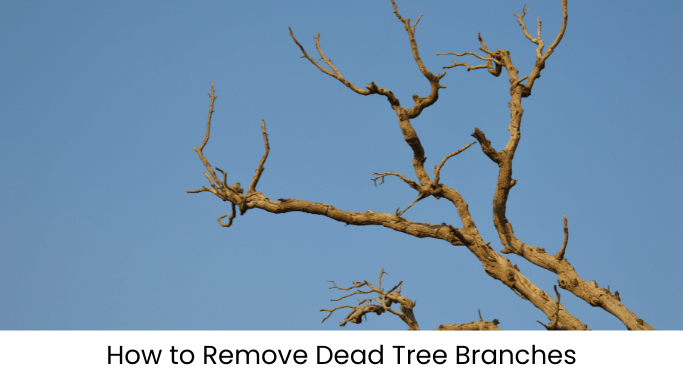|
The removal of dead tree branches ensures the healthy growth of your tree, as well as gives your tree a lush look. You can either remove the dead branches by yourself or opt for tree service for a more professional outcome. Now, trimming or pruning your tree may seem like an easy task. But it, in fact, requires much caution and skill. There are always chances of damaging your tree in your attempt of trimming the tree, and you might injure yourself too. Wondering how to remove dead tree branches? Go through this article to get a step-by-step guide on easily and efficiently trimming and pruning your tree. The Proper Method of Removing Dead Tree BranchesIdentifying the dead branchesYou cannot just get some tools and start trimming the tree. First, take your time to thoroughly inspect which branches need to be chopped off and from which point should they be cut. Remember, you are also promoting growth from the tip that you are trimming. You can initially start by marking the branches that do not have any leaves. Another good way of identifying the dead branches is by scratching them a bit with your nails. If the branch is totally brown and crisped, then chop it off. But if you see at least some green tints under the bark, then the branch can be saved. While examining the tree, check for any fungal and pest infestations. If you notice the presence of fungi or pests on a branch, immediately cut it off to stop the spread. Making the cutsThere are specific ways of making the cuts practiced by arborists. Since callous tissues appear on the cut points to heal the wounds, you need to be extra careful about not causing shock to your tree. Some commonly used cuts are as follows:
So, start cutting smoothly from either the bottom or the top of the branch, and move inwards. Do not leave long and sharp stubs of the branches, as this will stunt the growth of upcoming branches. Using the right toolsThere are absolutely no alternatives to using the proper equipment for trimming your tree. The smoother and faster the cut is, the better it is for the overall health of your tree. There are specialized pruning saws for removing thinner and thicker branches. Getting one of these will make your task much easier. Also, make sure to disinfect the saws before and after pruning each tree. The Importance of Trimming TreesYou might wonder why gardeners choose the hassle of trimming the dead branches. These are the reasons why-
The method mentioned in this article has been widely used by tree care professionals, and mastering this will only bring benefits to you and your tree. So, practice the method and keep your garden fresher, greener and livelier!
5 Comments
5/2/2022 08:05:08 am
Cool. This will surely give idea when and why tree removal services are needed.
Reply
5/4/2022 07:11:14 pm
This is applicable for shorter trees, but for taller ones that actually needs safety gears and equipment, please do not do it yourself.
Reply
9/24/2023 05:05:49 am
Your blog has helped me immensely. Would wait for more such posts soon.
Reply
11/3/2023 09:27:57 am
What a wonderfully detailed guide on pruning dead tree branches! Your step-by-step approach is immensely helpful, not only in keeping our trees healthy and robust but also in enhancing the safety and beauty of our gardens. It’s great to see the emphasis on using the right tools and techniques, which underscores the importance of doing this task correctly. I'm inspired to grab my pruning saw (with a fresh resolve to remember to disinfect it!) and give my trees the TLC they deserve. Thank you for this informative and practical post!
Reply
11/20/2023 10:30:32 pm
The importance of tree trimming is perfectly demonstrated here thank you for the post
Reply
Leave a Reply. |
|
|
Next Level Tree Care
15420 Shawnee Mission Pkwy #323 Shawnee, KS 66217 |
All rights reserved 2021


